| |
    |
ENVIRONMENTAL LOGGING RESOURCES
|
| [ SUSTAINABLE FORESTRY ] - [ FOREST MANAGEMENT GUIDELINES ] - [ REGULATIONS ] - [ INVASIVE SPECIES ] - [ PNDI ] |
| [ HAZARDOUS SPILLS ] |
| |
|
| |
SUSTAINABLE FOREST MANAGEMENT
|
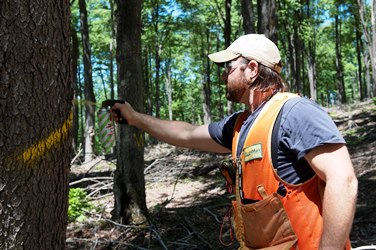 |
To practice sustainable forestry to meet the needs of the present without compromising the ability of future generations to meet their own needs means practicing a land stewardship ethic that integrates reforestation and the managing, growing, nurturing and harvesting of trees for useful products and ecosystem services such as the conservation of soil, air and water quality, carbon, biological diversity, wildlife and aquatic habitats, recreation, and aesthetics.
Learn more about sustainable forestry
|
|
[ Back to Top ]
|
|
| |
FOREST MANAGEMENT GUIDELINES
|
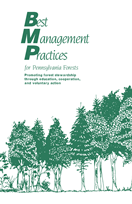 |
Pennsylvania developed forest management guidelines in 1993 as a means of establishing minimal acceptable practices that provide the fundamental basis for practicing sound and sustainable forest management in Pennsylvania. They are designed to benefit a wide array of forest resources and values and can be used and applied by landowners, loggers, foresters, and other natural resource professionals. These guidelines are divided into three important categories: Planning, Forest Operations, and Forest Values.
|
|
|
|
[ Back to Top ]
|
|
| |
PENNSYLVANIA ENVIRONMENTAL REGULATIONS & PERMITTING
|
 |
Pennsylvania is home to more than one million private water wells, 65,000 miles of streams, and thousands of ponds, lakes and reservoirs. Timber harvesting operations and other forest management activities have the potential to create situations where various forms of pollution could be carried off into local water resources during rainfall or snow melting events. This section reviews the environmental regulations and permitting requirements that regulate the potential impacts of Pennsylvania's timber harvesting operations.
Environmental Regulations & Permitting Page
|
|
[ Back to Top ]
|
|
| |
INVASIVE SPECIES
|
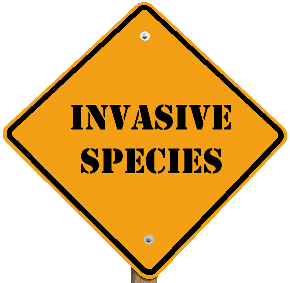 |
Invasive species are those plants, animals and pathogens that are not native to an area and can cause harm to the environment, to the economy and to human health. While not all non-native species are invasive, some can really do damage to our public and private lands. Invasive species are highly adaptable to different habitats, grow quickly or reproduce abundantly, are difficult to eradicate and can negatively impact our native species.
Pennsylvania timber harvesters should be alert for invasive species and familiar with ways to manage them. They should also be aware of any active acts and quarantines that may be in effect.
- Learn more about invasive species
- iMapInvasives - online invasive mapping database
- Pennsylvania Invasive Species Hotline: 1-866-253-7189
- Penn State Plant Disease Clinic - The Plant Disease Clinic at Penn State is a service and education function of the Department of Plant Pathology and Environmental Microbiology, and provides clinical diagnoses of plant diseases for approximately 2,000 samples submitted annually by Pennsylvania agricultural producers, urban gardeners, and homeowners. There is no charge for this service; however, only samples that have been collected from gardens or landscapes within the state of Pennsylvania can be accepted.
|
|
[ Back to Top ]
|
|
| |
PENNSYLVANIA CONSERVATION EXPLORER / PNDI
|
 |
The Pennsylvania Natural Heritage Program (PNHP) is a member of NatureServe, an international network of natural heritage programs that gather and provide information on the location and status of important ecological resources (plants, vertebrates, invertebrates, natural communities and geologic features). PNHP administers the online Pennsylvania Conservation Explorer.
The Pennsylvania Conservation Explorer provides conservation information on biological diversity, protected lands, streams and other natural resources for planning purposes and also allows timber harvesters to screen a project area for potential impacts to threatened, endangered, and special concern species through a Pennsylvania Natural Diversity Inventory (PNDI) Environmental Review. PNDI searches are a prerequisite for many DEP permit applications. The user performs the search online using the Conservation Explorer, recieves the results from the search (called a PNDI Environmental Review Receipt) and follows the instructions on the receipt. The Pennsylvania SFI Implementation Committee recommends that Professional Timber Harvesters complete a PNDI search on all their operations, whether it is mandatory or not. It is best to conduct the search as early as possible, and in many cases it may be beneficial to do a PNDI search before you even bid on a sale.
Threatened and Endangered
|
|
[ Back to Top ]
|
|
| |
HAZARDOUS SPILLS
|
|
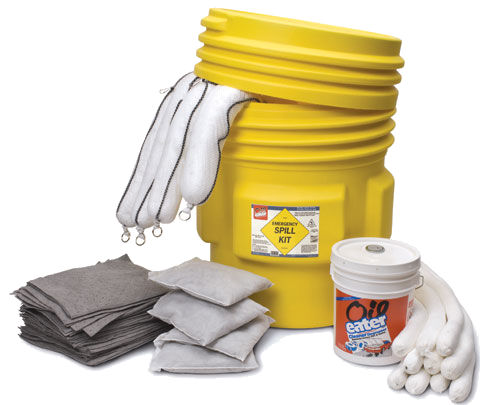
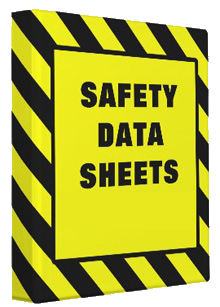
|
The Pennsylvania Code at 25 § 91.33 under the authority of the Pennsylvania’s Clean Streams Law requires that DEP be notified “immediately” when there is an accident or incident in which a toxic substance or other substance that could cause pollution is discharged into “waters of this Commonwealth.” Furthermore, the person responsible for the discharge must:
- Notify known downstream users of the waters if reasonably possible to do so
- Immediately take or cause steps to be taken to prevent injury to downstream users of the waters
- Remove any residual substances from the ground and waters of the Commonwealth within 15 days from the incident
NOTE: Chapter 91 regulations do not include a threshold on when a spill or pollution incident must be reported to DEP. Always exercise caution and contact DEP whenever there is a potential for a spill containing pollutants to enter Waters Of The Commonwealth. If DEP determines that a spill or incident has resulted in pollution and the person responsible has not notified DEP immediately, DEP may, under its legal authority, impose civil penalties up to $10,000 per day for failure to notify.
Report an Incident to DEP [1-800-541-2050]
Reporting Requirements for Spills and Pollution under Pennsylvania's Clean Streams Law [Fact Sheet]
EPA Priority Pollutants
Preparedness, Prevention, and Contingency (PPC) Plan Template for Timber Harvesting Operations [Required Form]
All spills - even relatively small spills - of hazardous materials can contaminate soil and drinking water resources as well as endanger our lakes, rivers, and streams. Small, ongoing drips, for example, can add up to a lot of spilled material over time. Spills onto soil and gravel are a particular threat to groundwater. There are many potential spill sources on a timber harvesting site, primarily related to the equipment and machinery used in the operation. Pennsylvania's timber harvesters need to be tuned in to all spill possibilities and know what to do if a spill occurs. Prevention through maintenance, preparation for spill cleanup, and reporting should be top priorities.
|
|
[ Back to Top ]
|
|
|
The material and resource links provided on this site are for informational use only and should not be construed as legal advice. Use this information at your own risk, and always be sure to consult with a expert before making legal decisions.
|
|
Viewing Portable Document Format (PDF) publications: To view the PDF documents on this page you will need to have Adobe Acrobat® Reader installed on your computer. The software is available as a free download from the Adobe website.
|
| Links verified: Jan. 2024 |
| Please alert the webmaster of any defective links |
|









